
What Causes Anxiety in Dogs? Here Are 4 Reasons Your Dogs Are Anxious
This post may include affiliate links. Please read my disclosure policy.
Have you ever returned home only to find that your pup clawed your favorite curtains to shreds? Or maybe your dog trembles uncontrollably on car rides, turning a leisurely trip into a panicked outing? Does every visit to the vet begin with cowering and whining, leaving you and him overwhelmed?
Well, just like humans, our fur friends can experience anxiety. As pet parents, there’s nothing more painful than seeing our pups suffer in fear. My dog, Chilly, struggles with noise aversion. It broke my heart to watch his panting and whining due to the sound of thunder escalate to a more destructive behavior. And he’s not alone—an estimated 50% of pets suffer from fear, anxiety, and stress (FAS).
In addition to noise anxiety, there are many different types of anxiety that pet parents may not be aware of. If you suspect you have an anxious dog, it’s important to recognize the symptoms, learn the causes, and start reducing stress in your pup. That’s why I founded Pet Anxiety Awareness Month, so that pet parents would have the tools they need to help their furry BFFs regain peace and happiness.
Pin Me!
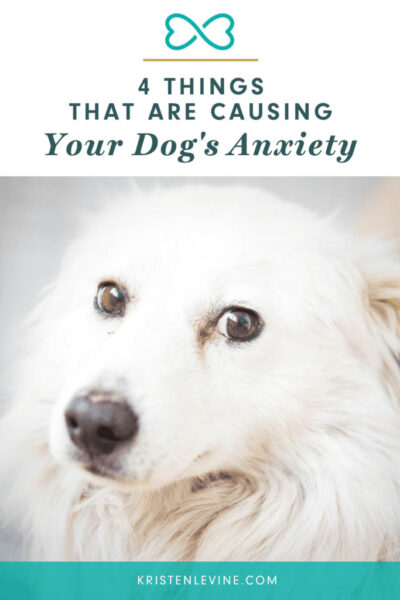
Symptoms of Dog Anxiety
If your dog suffers from FAS, the first step in helping him is to understand what’s triggering him. Anxiety symptoms in our fur friends are surprisingly varied and often include behaviors that you might not normally associate with canine anxiety. Here are some common symptoms anxious dogs may present:
- Urine marking or defecation
- Barking or howling
- Chewing/destroying things
- Digging
- Trying to escape
- Pacing
- Attempting to prevent you from leaving
- Whining/whimpering
- Trembling
- Dilated pupils
- Excessive licking
- Avoiding interactions
- Displacement behaviors: yawning, lip licking, air sniffing, “shaking it off” like a wet dog
If your dog is experiencing any of these symptoms, he is truly suffering! His problems won’t resolve on their own. It’s important to get help and understand what’s causing his anxiety.
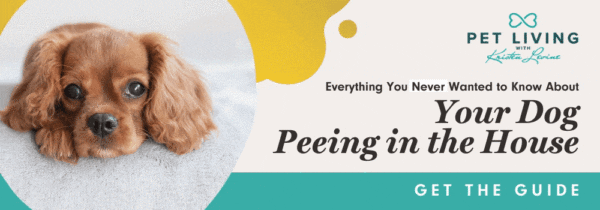
Types of Anxiety in Dogs
Not all anxiety is the same! It’s important to identify which type (or types) of anxiety your dog has because the treatment for each is different. My dog Buck had two kinds of anxiety, and each required a different approach.
Social Anxiety: Is your dog perfectly fine around their human and fur family members but feels panicked when meeting strangers? Whether due to a lack of socialization or a traumatic experience, many dogs experience anxiety when exposed to unfamiliar dogs or people. This may result in the dog barking, lunging, or trying to get away. Worse yet, it may result in fear aggression.
Noise Anxiety: Also known as noise aversion, our fur friends can be triggered by a variety of noises. And sadly, an estimated 67% of dogs have at least one symptom of noise anxiety. My dog Chilly has been diagnosed with noise aversion. It became so severe that he once tried to break down a closed closet door to hide from the frightening noise of thunder.
Like Chilly, some dogs are sensitive to out-of-nowhere loud noises like fireworks or thunderstorms. But everyday noises such as the smoke alarm, a dropped pan, or even the beep of an alarm clock can also send our dogs into a panic attack. Common triggers for noise-anxious dogs are:
- Alarms/ringtones
- Construction noise
- Doorbells
- Fireworks
- Garbage trucks
- Indoor home improvement
- Lawnmowers
- Music
- Noise from parties
- Shooting ranges
- Sirens
- Snowplows
- Sporting events
- Thunder
- Traffic sounds
- Vacuum cleaners
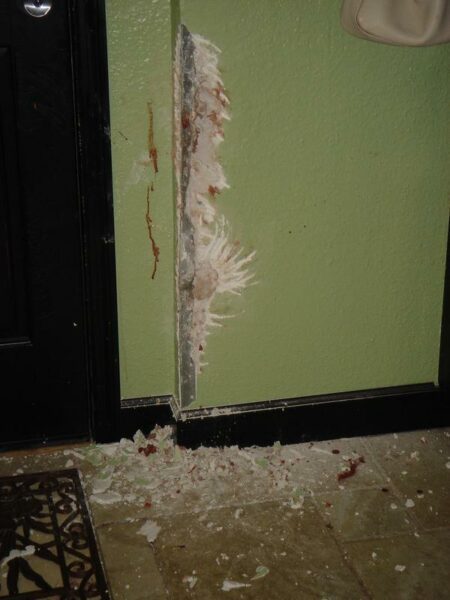
Separation Anxiety: Your anxious dog may be suffering from separation anxiety. As much as we would love to spend every waking minute with our dogs, there are times when we must leave them at home. For some pups, being left alone causes extreme anxiety, leaving them terrified and unhappy. Just like other forms of FAS, separation anxiety affects dogs in different ways and to different degrees. Watch for any of these signs:
- Whining
- Pacing
- Panting
- Barking
- Destructive behavior (clawing, chewing, etc.)
- Peeing
- Clinging to you
- Barking or howling
Buck, mentioned previously, would actually chew the drywall down to the studs and mangle door handles when his separation anxiety was at its worst. It got to the point where we just couldn’t leave him home alone.
Veterinarian Visit Anxiety: Not surprisingly, this is one of the most common anxiety triggers for pets. Just the sight of the crate they ride in on the way to the vet may be enough to send your pup cowering to the nearest corner with his tail between his legs. Then, when he arrives at the office, all the unfamiliar sights, sounds, and smells, perhaps combined with some not-so-great vet experiences in the past, can result in fear, anxiety, and stress.
4 Things That Cause Dog Anxiety
It’s important to understand that anxiety in dogs is a physiological response. It’s not something your anxious dog can turn off and on any more than a human can with a panic attack.
Yet just like humans, each dog may have a different source or cause of their anxiety.
Genetics
Yes, genetics play a big part in whether or not your dog has anxiety. Some dogs are just more prone to having anxiety. And while you can’t change your dog’s genes, you can alleviate the symptoms of how those genes are expressed.
Trauma
Past experiences that have left your dog traumatized can feed anxiety. Traumatic events include:
- Being surrendered to a shelter
- Abuse
- Loss of a family member
- Sudden change in routine or surroundings (like moving to a new house)
Dogs are creatures of habit, and when things in their world change, it can be quite traumatizing.
Aging
Senior dogs risk developing a cognitive disorder. Cognitive dysfunction syndrome causes anxiety in many dogs, much like a person who develops Alzheimer’s or dementia.
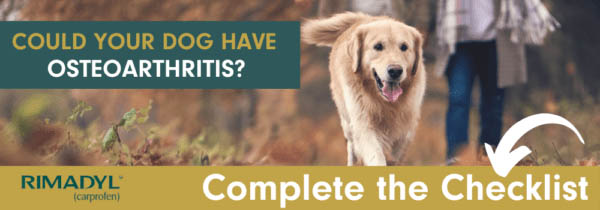
Lack of Exposure
An anxious dog may not have been exposed early on and regularly to new people, places, and experiences. A lack of exposure can be a major source of chronic anxiety when exposure does occur.
Even though your dog’s anxiety may be deeply ingrained, it’s possible to reduce symptoms with the right treatment. And by narrowing down the type of anxiety your dog is experiencing, you can use targeted therapies that will work for him.
How To Reduce Anxiety in Your Dog
Once you’ve discovered what’s causing your dog’s anxiety, you can find the best way to treat him. Here are five excellent solutions for managing dog anxiety and helping your pup regain his peace.
For social anxiety, try the Adaptil Calming Collar:
This pheromone collar will put your dog at ease and minimize destructive behaviors. It’s so easy to use. Simply put the collar on, and your dog’s body heat will activate the calming pheromones.
Adaptil is the one I use since it’s the no. 1 veterinarian recommendation!
For mild noise aversion, choose Zylkene:
This over-the-counter treatment is great for managing anxiety due to certain loud noises. Plus, it has no contraindications and can be used long-term.
Check out my blog post to see all the reasons why I love Zylkene for dog anxiety.
However, veterinary prescription medications might be the best treatment if your dog is suffering from severe noise aversion, like my Chilly.
You can learn more about that in this article about helping your dog with noise anxiety.
DOGTV is perfect for separation anxiety:
These programs are specifically designed with your dog’s particular needs in mind. My dogs, Chilly and Tulip, are kept calm with this while I’m working. Even if they’re not actively watching, the soothing sounds keep them relaxed and happy.
For anxious visits to the vet, I love Thunderworks:
Thundershirt will give your pup instant stress relief.
I have had great success with Thunderworks products. Their Thunderease calming diffuser is great for keeping your dog calm at home.
Also, give Thundershirt a try! It has been proven to be 80% effective in treating various types of anxiety in dogs.

Pet Living family member Zuzu loves her Thundershirt for anxiety.
For general anxiety, try ElleVet Sciences:
These veterinarian-formulated CBD products are a must-have in my household! My dog, Tulip, loves their hemp oil, and it helps her keep calm when she’s feeling separation anxiety. Their products are great for social, noise, or general anxiety.
A word of caution: It may not be a good idea to use this before a visit to the veterinarian, as it could interact with anything your pup’s doctor gives him.
Training and Counterconditioning
If your dog is suffering from anxiety, don’t delay in getting him help! The top reason why pets are surrendered to shelters is because of behavioral problems that their family can’t manage—behavioral problems that are often caused or exaggerated by FAS.
When it comes to actually treating dog anxiety, your veterinarian may recommend desensitization or training and counterconditioning to help your pup. These methods gradually change your dog’s negative reactions to positive ones. It’s important to start slowly, ensuring your dog is comfortable and not overwhelmed.
With desensitization, you introduce your dog to the fear-inducing trigger at a low level. Gradually increase exposure as your dog becomes more comfortable.
Counterconditioning pairs the scary thing with something your dog loves. Each time your dog is exposed to the trigger, they receive a positive reward, like their favorite treats. The idea is to flip your dog’s perception of the trigger from negative to positive.
For example, if your dog fears other dogs, start by having your dog at a distance where they are comfortable. When your dog notices the other dog, provide a positive reward. Slowly decrease the distance over time, and make sure your dog remains relaxed and receptive to the treat. If your dog shows signs of anxiety, return to a greater distance and work your way back.
FAQs
Can you Prevent Anxiety in Dogs?
While it’s not always possible to completely prevent anxiety in dogs, there are several strategies that can help reduce or manage it, as you’ve read above.
The first step is, as you’ve read here, understanding what causes their anxiety. Another step you can do, especially if you have a young dog, is making sure they’re properly socialized. Exposing puppies to different people, animals, and environments is crucial in preventing anxiety issues later on.
Maintaining a consistent routine and providing a structured environment also helps in reducing anxiety. Regular exercise and mental stimulation are essential for a dog’s physical and mental health, which can include activities like daily walks or playing fetch. Recognizing your dog’s body language can also provide early warning signs of anxiety. Understanding the signs of discomfort or fear in your dog will let you either steer clear of such situations or use them to effectively countercondition your pet.
Being aware of your dog’s specific anxiety triggers and avoiding those scenarios when possible can also help prevent panic attacks. For example, if a dog is afraid of rain, keeping them inside during storms can help mitigate anxiety.
What Dog Breeds Have the Most Anxiety?
Dog anxiety can affect all breeds, but some breeds may be predisposed to profound fear as mentioned by PetMD. These breeds include, but are not limited to, the Siberian Husky, German Shorthaired Pointer, Greyhound, Chesapeake Bay Retriever, Bernese Mountain Dog, Border Collie and Poodle.
The Final Woof
If you suspect your pooch is struggling from one of these causes of anxiety, please consult your veterinarian and try my tips for reducing anxiety in your dog and help him enjoy a calm, happy life!
This is a sponsored post. However, all opinions and anecdotes are my own, and I never promote any products or brands I don’t believe in.
~Petfully yours, Kristen



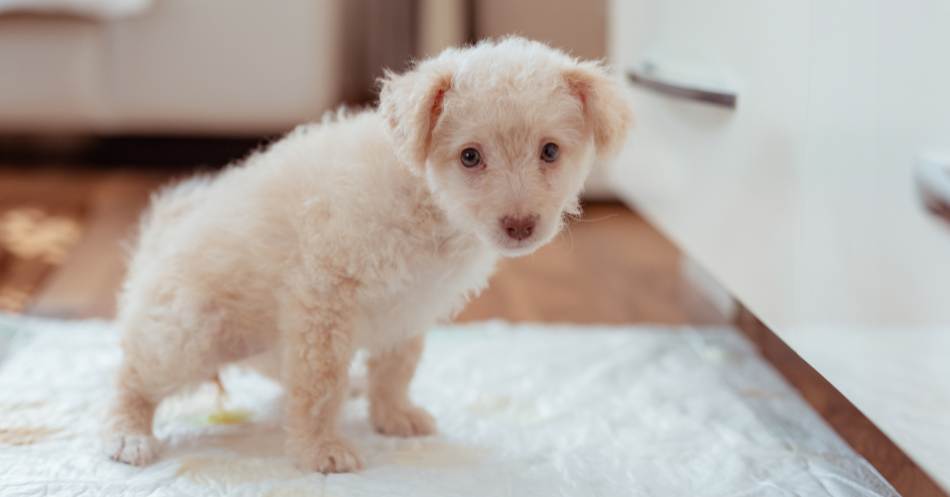

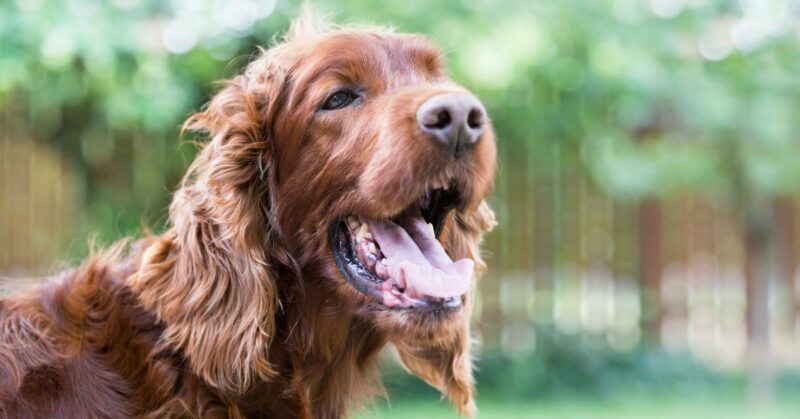
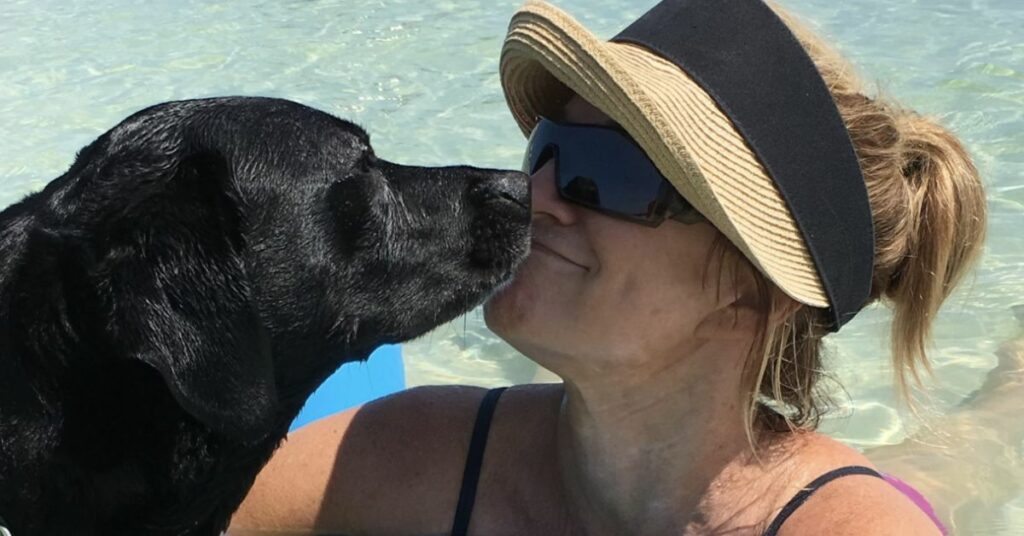
My dog a rescue has separation anxiety. He pees and now poops in the house when I leave. I have confined him to a play yard while I’m gone to prevent him from peeing all over the house. What can I do ? He is almost 5 and I’ve had him for 2 years
My dog a rescue has separation anxiety. He pees and now poops in the house when I leave. I have confined him to a play yard while I’m gone to prevent him from peeing all over the house. What can I do ? He is almost 5 and I’ve had him for 2 years
I had a Labrador Retriever who became anxious as he aged. His hearing and sight were affected, so normal stimuli would scare him. It’s understandable really if you think about it. Thunderstorms had him shaking and whimpering. So, during storms, I kept the lights on in the house so he could not see the flashes of lightening. I also kept a radio on in the room he went to so there was some constant sound. I would also sit with him so he knew he wasn’t alone.
My deaf dog reacts (overreacts) to visual stimuli, also understandable. So, keeping the lights on during a thunderstorm really helps. He also does not want to be alone during this “different” time. You see, I find that routine is the most important thing you can give your pet to build his confidence. The structure keeps him from wondering what is going to happen next, which can make them, and anyone, anxious.
My deaf and blind dog is totally oblivious to storms, however, he is on anti-anxiety meds always. A few years back he became anxious at bedtime at night. I always make sure he knows I am there, and even so – sometimes he would bark and lunge. He also developed “gulpies” which could go on for 4-6 hours. So the Vet suggested trying anti-anxiety meds and so far so good. He is very attached to his routine, and sometimes reminds me it’s time to eat or take his meds.
with there was more people like you in the world your doing a good thing
Thank you for your kind words!
Kristen
Hi Kristen,
My little Jack Russell Terrier at times suffers from anxiety. She jumps on our laps and gives non ending kisses and actually hug us a lot. She sometimes paces back and forth too and looks up at us and stares.